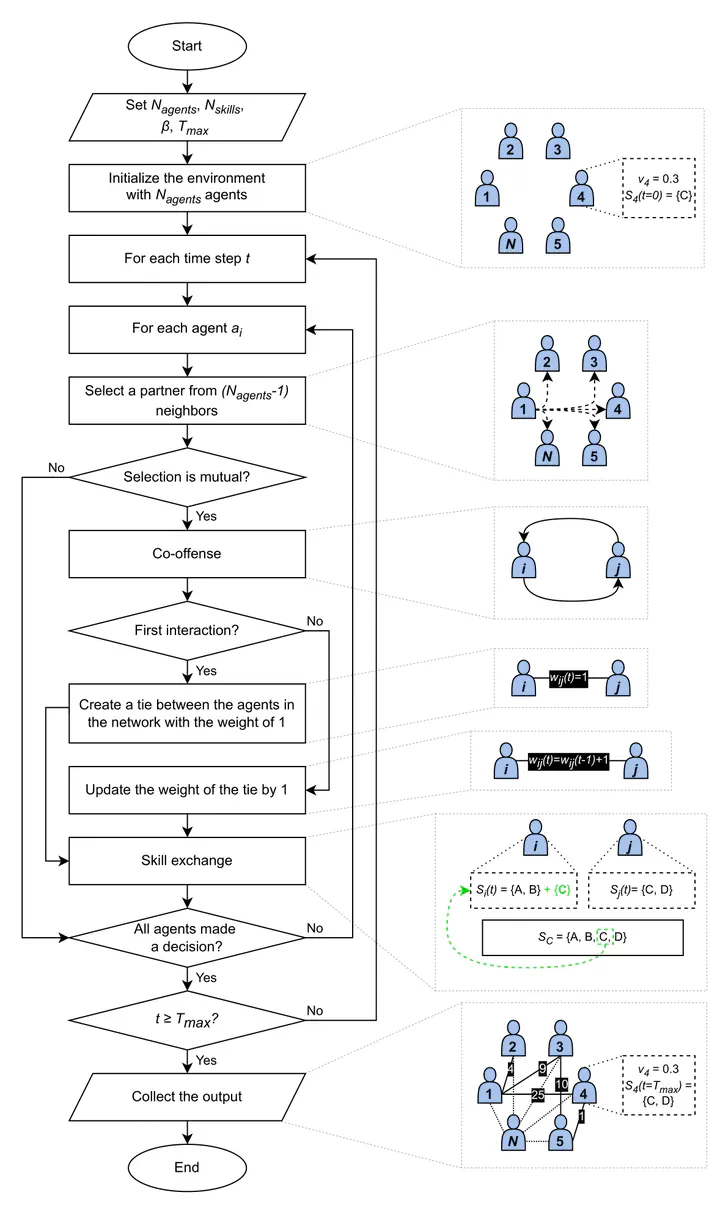Homophily promotes stable connections in co-offending networks but limits information diffusion: insights from a simulation study

Abstract
Purpose: Offenders often select partners based on shared characteristics such as age, sex, or ethnicity, a phenomenon known as homophily. At the same time, co-offenders also face a challenge of choosing between trustworthy partners to maintain stable collaborations and useful partners who provide access to new skills and information. This study investigates how homophily shapes the structure of criminal networks and, consequently, the diffusion of information within these networks.
Methods: Using an Agent-Based Model, we simulate a population of offenders that select partners either randomly or based on high similarity preference. When two agents mutually select each other, they commit a co-offense, forming a social network and exchanging skills.
Results: Compared to the case of the random partner selection, the homophily-driven environment results in sparse networks with a higher number of repeated interactions between agents, but with a slower rate of skill exchange. Moreover, on the individual level, having many partners is more beneficial for diverse skill acquisition, but those partners should belong to different subgroups.
Conclusion: The results provide insights into how offender preferences shape the structure and dynamics of criminal networks, particularly in relation to opportunities for collaboration and skill acquisition. The findings highlight a key trade-off introduced by homophily. Although it promotes stable partnerships, it restricts the exchange of information across the broader network.
Methods: Using an Agent-Based Model, we simulate a population of offenders that select partners either randomly or based on high similarity preference. When two agents mutually select each other, they commit a co-offense, forming a social network and exchanging skills.
Results: Compared to the case of the random partner selection, the homophily-driven environment results in sparse networks with a higher number of repeated interactions between agents, but with a slower rate of skill exchange. Moreover, on the individual level, having many partners is more beneficial for diverse skill acquisition, but those partners should belong to different subgroups.
Conclusion: The results provide insights into how offender preferences shape the structure and dynamics of criminal networks, particularly in relation to opportunities for collaboration and skill acquisition. The findings highlight a key trade-off introduced by homophily. Although it promotes stable partnerships, it restricts the exchange of information across the broader network.
Type
Publication
Crime Science, 14(1)